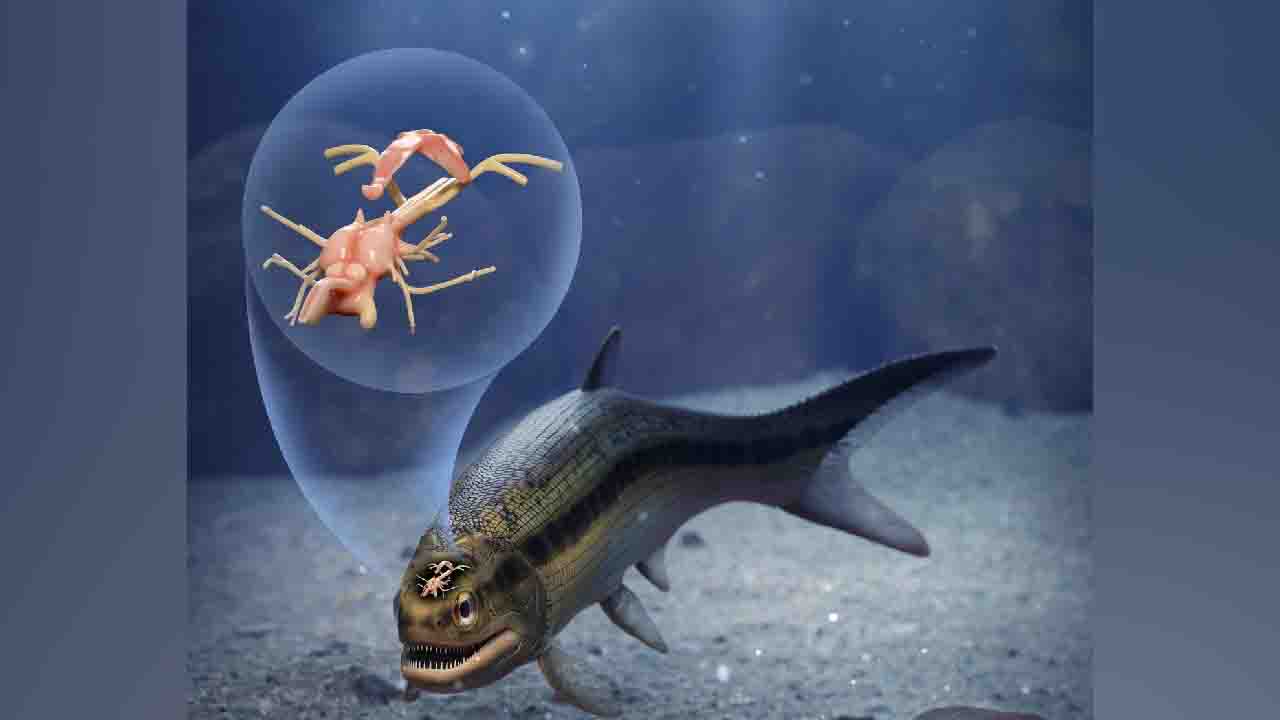Science & Technology, UK (Commonwealth Union) – Throughout the ages fossils have had a significant role in various fields of study, including geology, paleontology, archaeology, and evolutionary biology. Fossils have provided evidence of past life on Earth, including the evolution and diversification of species over time. They further assist us in establishing the relative and absolute ages of rock formations, allowing geologists to reconstruct the geological history of a region.
A 319-million-year-old fossilized fish, found in a coal mine in England over a century ago, has demonstrated the oldest example of a well-preserved vertebrate brain.
CT-scanning, where X-rays are applied to show internal features, indicated that the skull of the creature has a brain and cranial nerves that are roughly an inch long.
Scientists from the University of Birmingham in the UK and the University of Michigan in the United States indicate that the discovery paves the way to the neural anatomy and early evolution of a major group of fishes presently existing as ray-finned fishes.
Researchers indicate that the results give new insights into the preservation of soft parts in fossils of backboned animals. The majority of the animal fossils in museum collections were produced from hard body components like bones, teeth and shells.
University of Birmingham’s Senior author Sam Giles says “This unexpected find of a three-dimensionally preserved vertebrate brain gives us a startling insight into the neural anatomy of ray-finned fish. It tells us a more complicated pattern of brain evolution than suggested by living species alone, allowing us to better define how and when present day bony fishes evolved.”
“Comparisons to living fishes showed that the brain of Coccocephalus is most similar to the brains of sturgeons and paddlefish, which are often called ‘primitive’ fishes because they diverged from all other living ray-finned fishes more than 300 million years ago.”
The CT-scanned brain analyzed was of the Coccocephalus wildi, an early ray-finned fish approximately the size of a bream that swam in an estuary, possibly feeding on small crustaceans, aquatic insects and cephalopods, a group presently including squid, octopuses and cuttlefish. Ray-finned fishes have backbones and fins with the support of bony rods known as rays.
Researchers also indicated that soft tissues such as the brain generally rapidly perish and seldom fossilize. However, with the death of this fish the soft tissues of its brain and cranial nerves were replaced as fossilization taking place with a dense mineral that preserved, in exquisite detail, their 3 D structure.
Lead author Rodrigo Figueroa, from the University of Michigan, says “Not only does this superficially unimpressive and small fossil show us the oldest example of a fossilised vertebrate brain, but it also shows that much of what we thought about brain evolution from living species alone will need reworking.”
When the researchers initially discovered the unusual component within the skull, they were not specifically seeking a brain from the skull fossil. The mystery component had demonstrated various features present in vertebrate brains: Iit was bilaterally symmetrical, having hollow spaces similar in appearance to ventricles, and it contained many filaments extending toward openings in the braincase, looking similar to cranial nerves, that move via such canals within living species. A vital indication had been that, the brain of Coccocephalus folds inward, as opposed to all living ray-finned fishes, where the brain folding outwards is noted.
The fossil demonstrates a time prior to a signature feature of ray-finned fish brains evolving, indicating a possible time this trait evolved.
Much research into fossils in recent years has been boosted with recent advances in technology with data analysis software and technology to examine the finer details, however for the researchers of this study to find a component that was fossilized as it was changing is likely to be a price beyond technological advancement.







